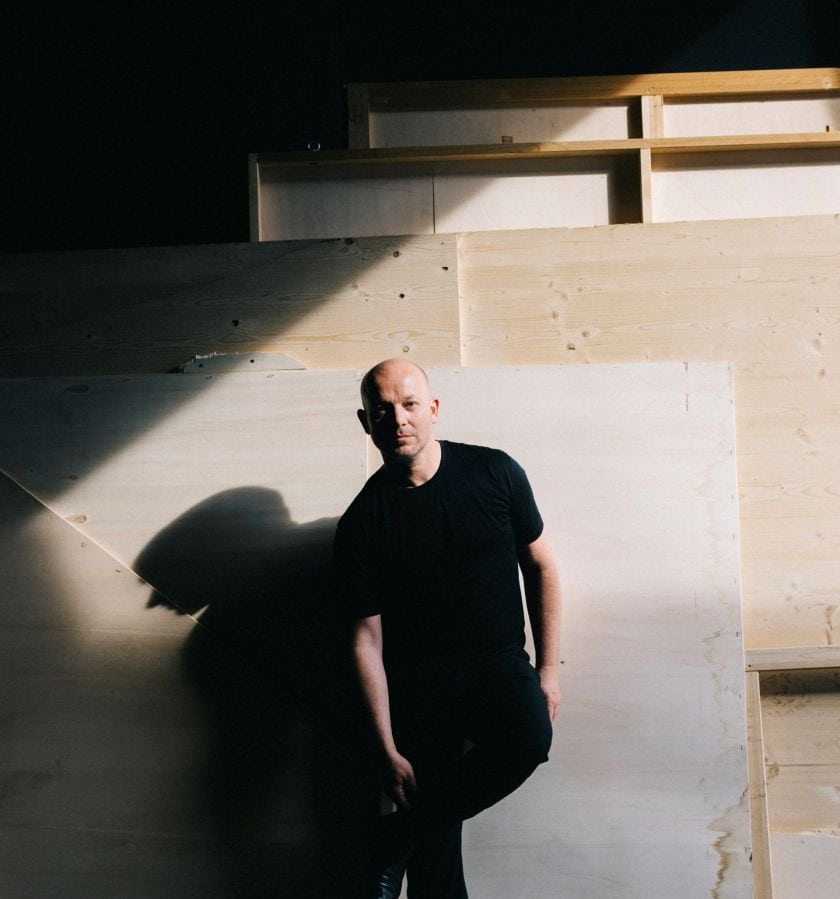Maria Stuarda
After directing his impressive productions of Aeschylus’ The Persians and Lessing’s Nathan der Weise, Ulrich Rasche returns to Salzburg for a belcanto opera recounting the power struggle between two historical queens. The radical sense of form that distinguishes the plays he directs also marks Rasche’s approach to Donizetti’s Maria Stuarda. In conversation, he talks about his affinity for musical theatre, the power mechanisms in Maria Stuarda and his preliminary work with Lisette Oropesa and Kate Lindsey, who will perform the formidable roles of Elizabeth I and Mary Stuart.


Mr. Rasche, you are an experienced director of spoken theatre. After Elektra in Geneva and the Johannes-Passion in Stuttgart, Maria Stuarda is your third musical theatre production. How would you describe the difference, compared to working with drama?
Ulrich Rasche: My drama productions have always borrowed from musical theatre – I often work with a composer and live accompanying music. The overall dramaturgy of an evening is strongly oriented towards musical motifs in my work. Therefore, the leap into opera is not as huge as one might think. One significant difference, certainly, is that singers have very different needs than actors, other compulsions and afflictions. That requires a different relationship between the director and the performers. Furthermore, the production and rehearsal process is different. In opera, it is more regimented in certain ways, but that also offers a supportive form and structure.
How would you describe your relationships with opera, especially with belcanto?
Privately, I enjoy listening to belcanto. The call from Salzburg, however, still surprised me, because the musical world of belcanto is quite far removed from my aesthetics. The longer I studied it, however, the more interesting and fruitful I found that contradiction. The content of Donizetti’s Maria Stuarda is quite close to my work: the rivalry and hardness between the two queens, Mary Stuart and Elizabeth I, which ends logically with the murder of the rival, are closely connected with the issues I have been exploring for a long time. I consider this an opportunity to give this music, which seems so easy to consume, some dramatic heft, and to place focus more firmly on the story: then this is not just about two colourful, extroverted women, but about a desperate struggle for power, for simple survival. And about a fight between two powerful queens which is more brutal than the title Maria Stuarda may suggest.
What is Maria Stuarda about?
We have the relationship of the two queens, in which jealousy, envy and hatred play a role – almost as in a soap opera; above that, however, the opera describes the mechanism of power in principle – a mechanism that unfolds outside of these two rulers. It is the context within which they both move. That’s why it’s so important to imagine the people around them and their power on the one hand, and on the other the people, the people heard from the very beginning, pressurizing Queen Elizabeth. It becomes clear that various groups, such as the people and the court, have their very own reasons to interfere in the action. Thus, the opera also describes two powerful women under surveillance, surrounded and manipulated by a group within the state machinery that is exclusively male.
Have you talked to Kate Lindsey and Lisette Oropesa, the singers in the two main roles, yet?
Yes. There have been several encounters – our rehearsal phase is preceded by a long period of preparation. The singers are very open to our concept. The combination of choreographed movement with the metre of the music seems to be quite close to their own feelings about the music. This open, cooperative attitude of the two main performers has given me a lot of joy and optimism regarding the summer.
Would you describe your work as choreographic?
The accentuation of the “choreographic” or “formal” element alone would not do justice to my working method. Since my background is spoken drama, I see my work as an intense exploration of the text, the protagonists and the situations they are in. The works may be large-scale aesthetic concepts, but they start very clearly with the content and the characters, and only in the next step are they expressed in a formal manner. The point is not to bring something to bear on the work from the outside, but the conceptual method is to approach the content, to study the work itself.
Interview: Yvonne Gebauer
First published in the Festival insert of Salzburger Nachrichten
